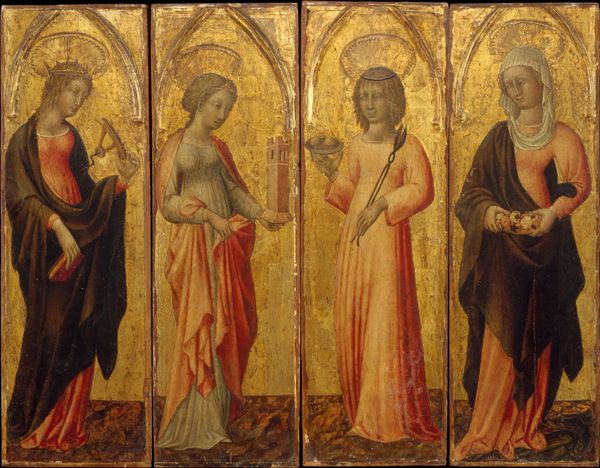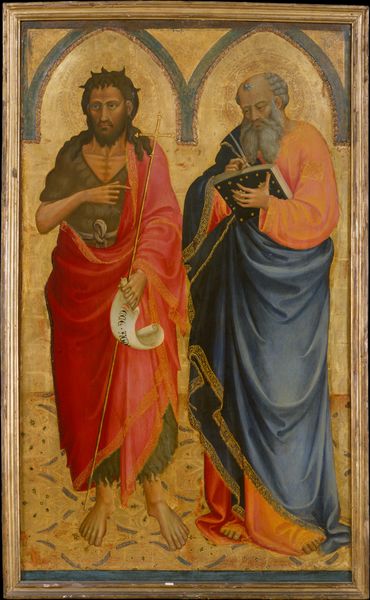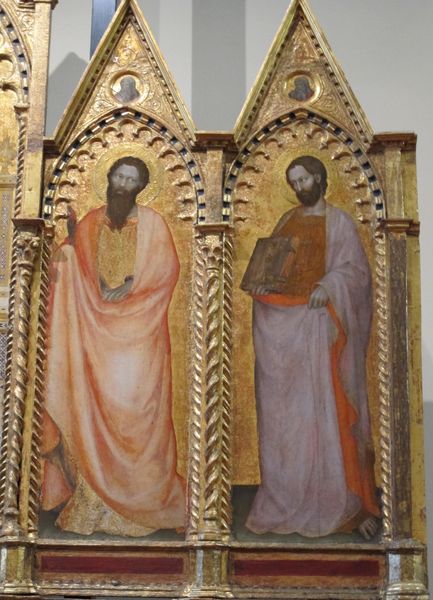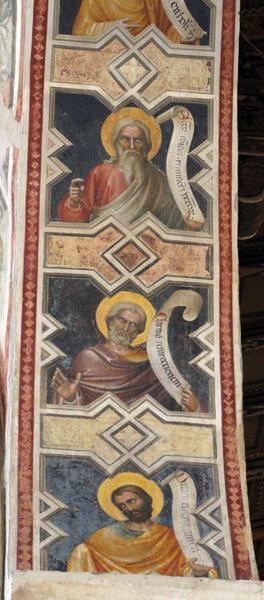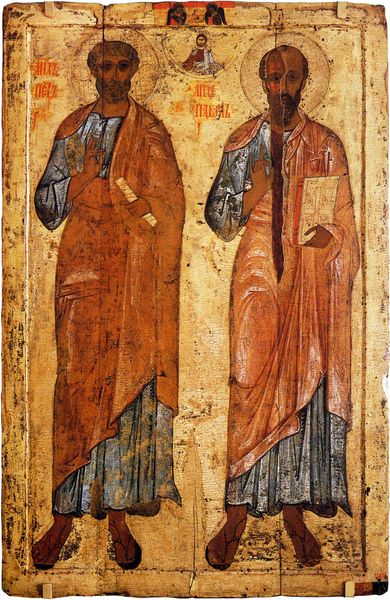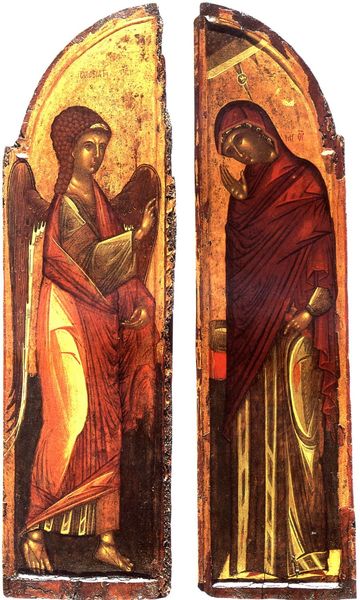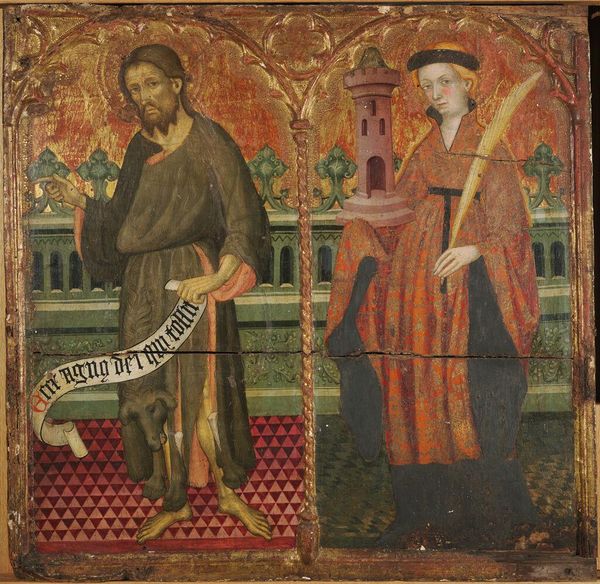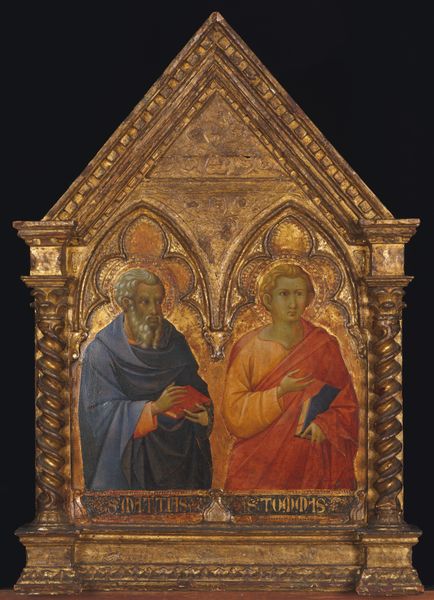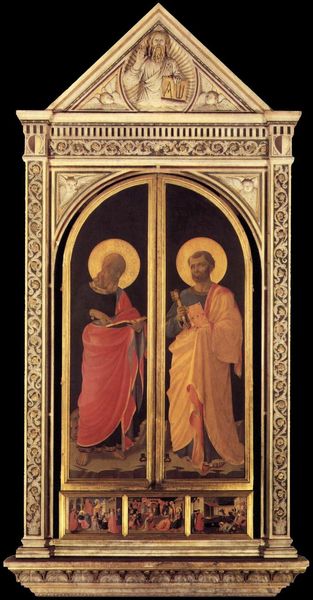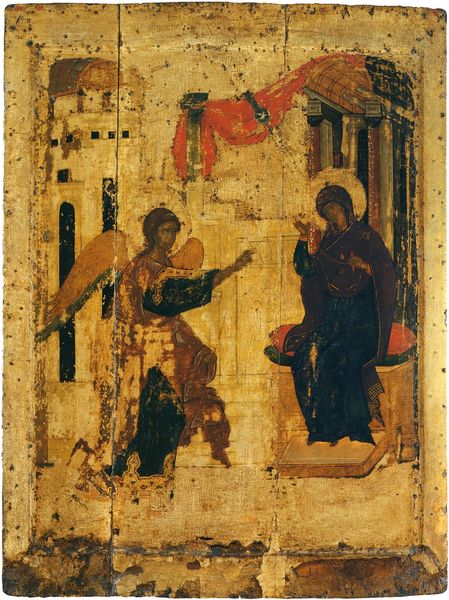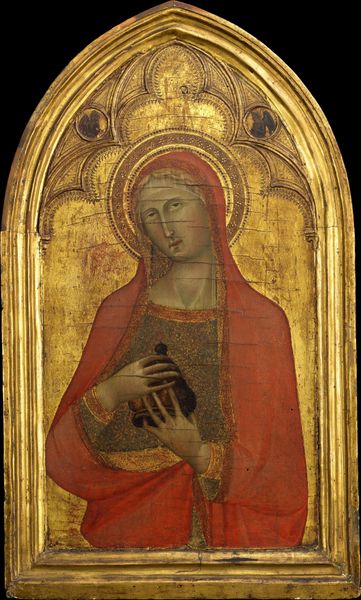
St. James the Greate and St. Peter, the polyptych Sandei Collection Berenson 1412
0:00
0:00
panel, tempera, painting, oil-paint
#
portrait
#
panel
#
tempera
#
painting
#
oil-paint
#
oil painting
#
history-painting
#
academic-art
#
italian-renaissance
#
early-renaissance
Copyright: Public domain
Editor: This is "St. James the Greater and St. Peter," a panel painting in tempera and oil paint, made around 1412 by Gentile da Fabriano. The two figures seem a bit stoic, set against these radiant gold backgrounds. What stands out to you? Curator: The diptych showcases a beautiful study in contrasting color and form. Note how the artist balances the cool, shadowed blacks of St. Peter's robes against the textured, light-infused reds and oranges clothing St. James. Observe too, the meticulous details rendered in gold leaf— framing each figure with luminous halos. What visual relationship do you see between the textured drapery folds and overall composition? Editor: I see! The folds in the fabric create these dynamic lines that guide your eye upwards toward their faces, even though they are placed asymmetrically in the panel. How does this formal arrangement speak to the subjects portrayed? Curator: Indeed. Notice the distinct patterns within each panel; each halo presents unique arrangements of concentric circles and textured radiation— almost functioning as individual microcosms reflecting the spiritual essence of each saint. Consider, therefore, how the variations of color, texture, and composition serve as signifiers for these holy figures. Editor: So, it’s not just about representing the figures themselves but also using artistic elements to signify their saintly status through pure form? Curator: Precisely. This emphasis on the formal elements, rather than sheerly illustrative representation, elevates the work beyond mere portraiture, inviting a deeper meditation on spiritual ideas through purely aesthetic means. The texture becomes, in itself, a carrier of meaning. What, then, might we conclude about the role of the artist in constructing this meaning? Editor: I suppose Gentile da Fabriano wasn't just depicting saints, but using shape, color, and material to show holiness itself, as a concept! Thanks, I never thought about it that way. Curator: An insightful reflection; it encourages us to regard form as an intrinsic language, laden with its unique expressive capacity.
Comments
No comments
Be the first to comment and join the conversation on the ultimate creative platform.
